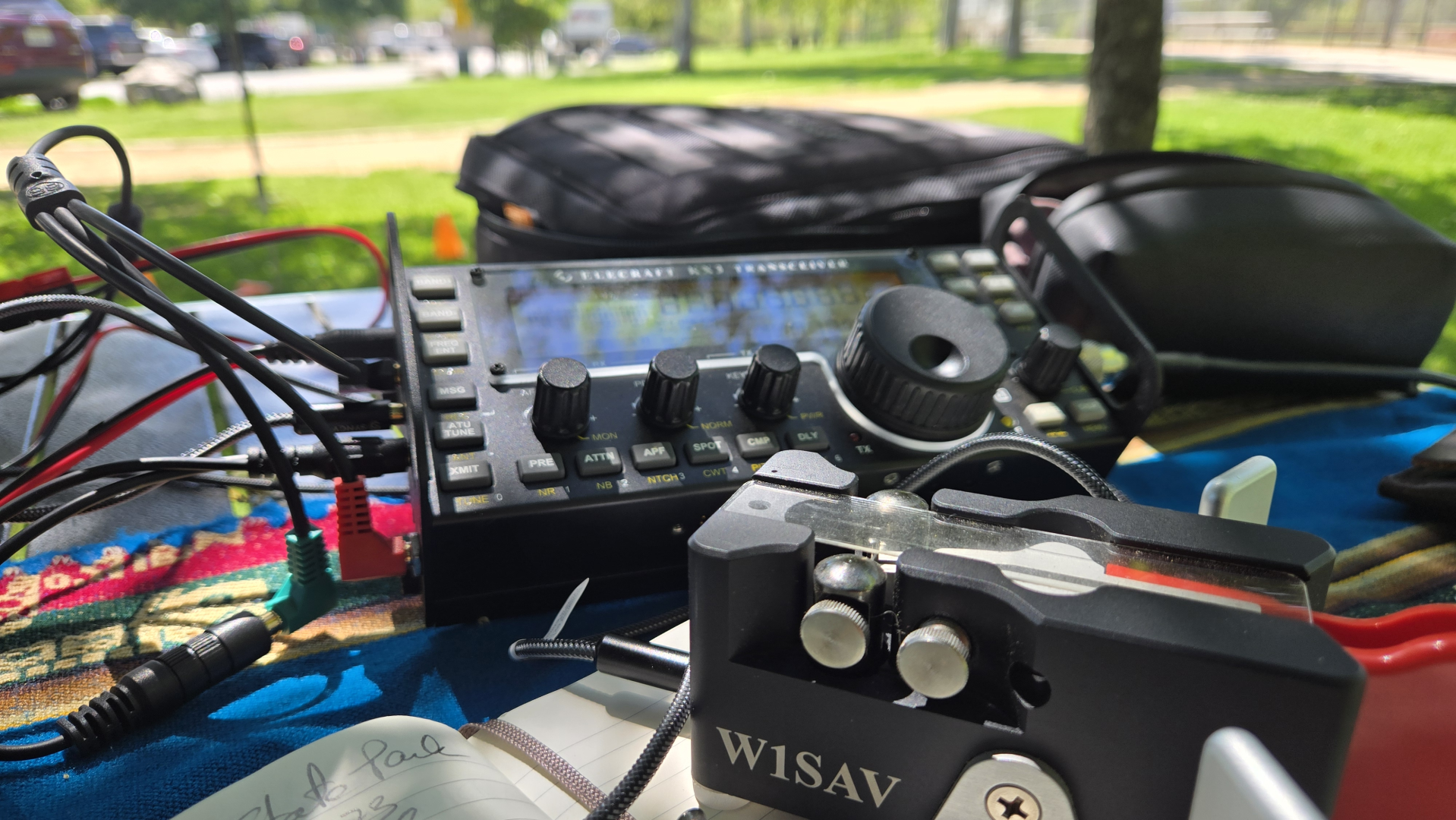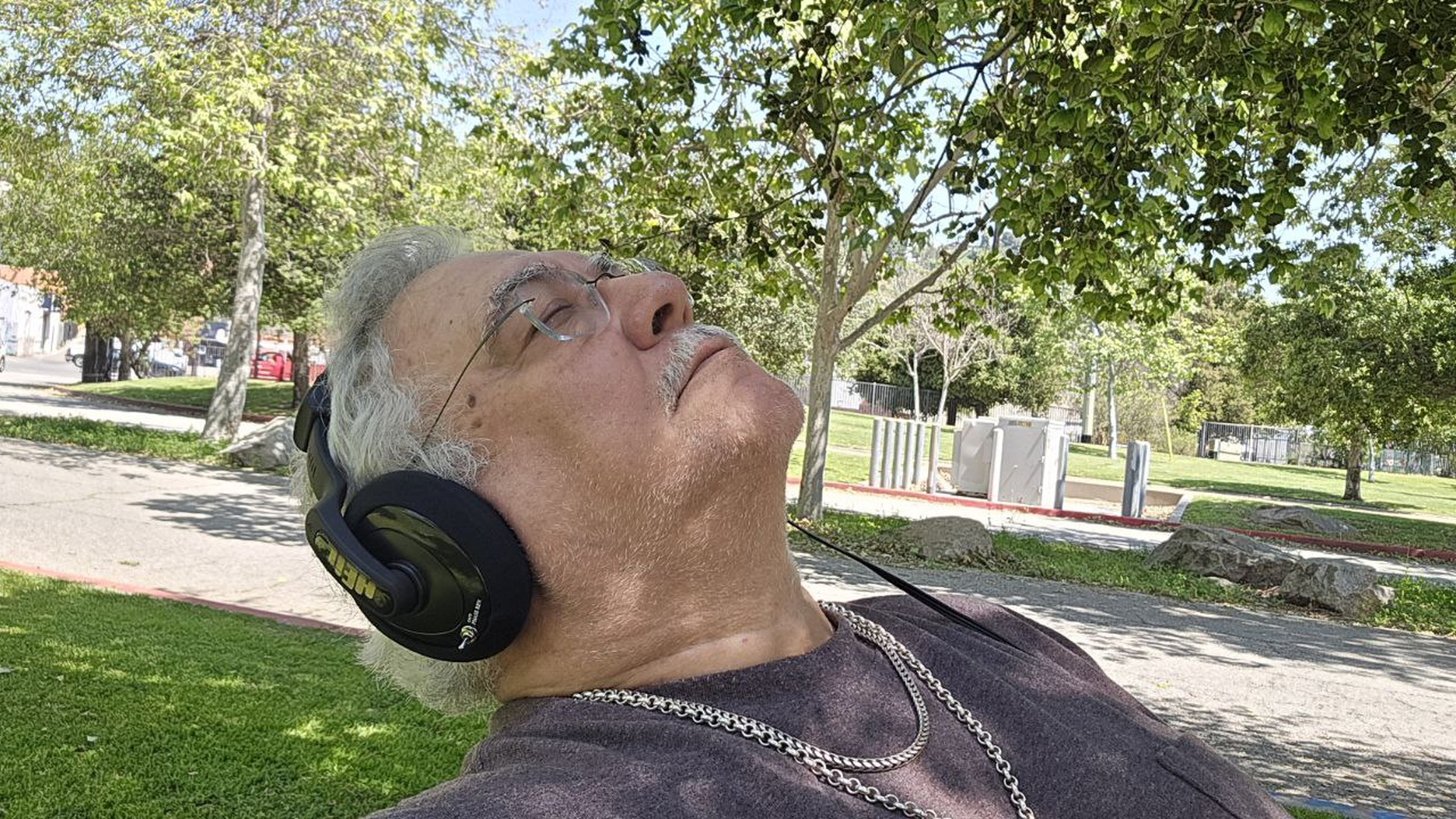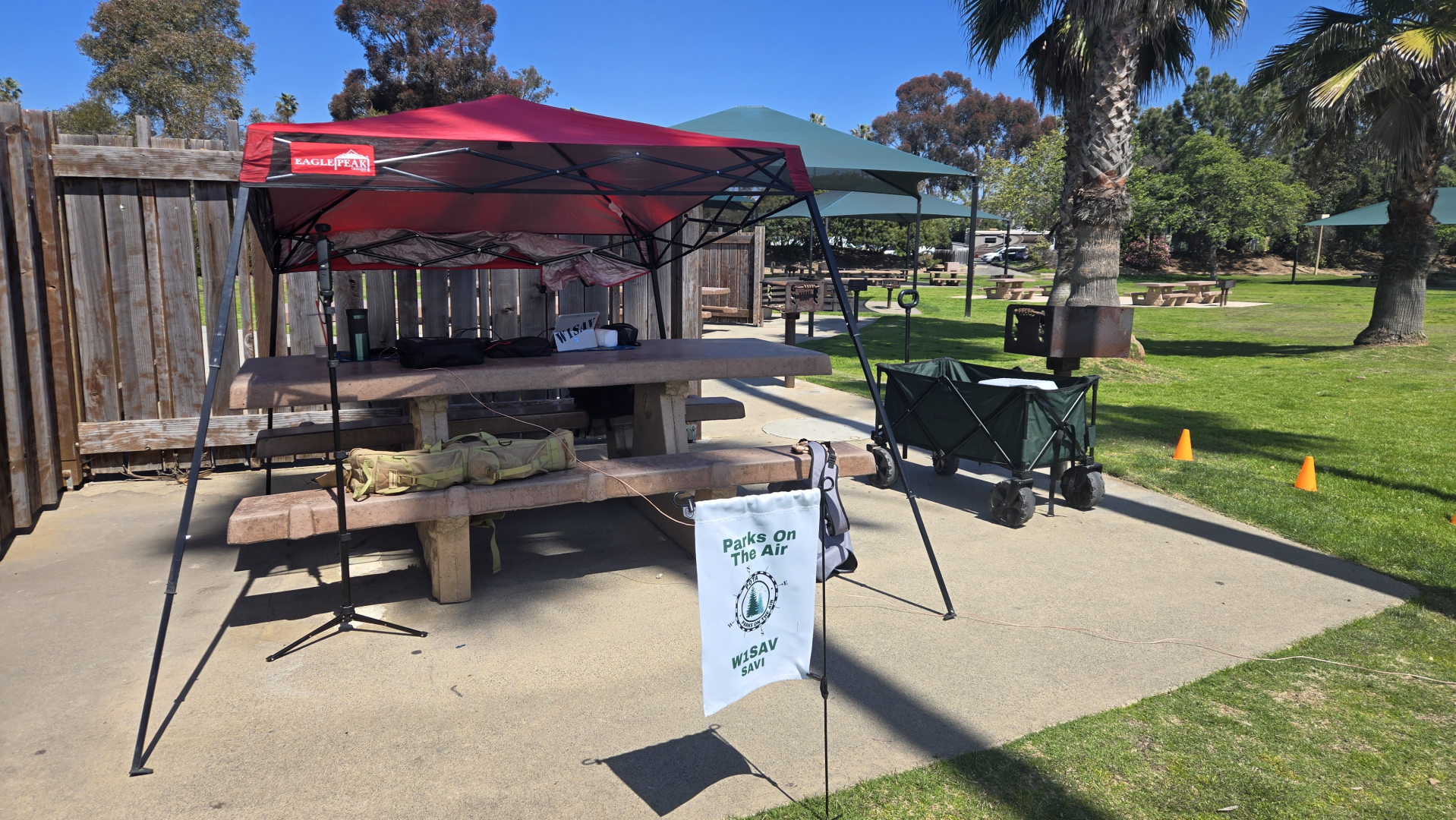Activated on January 9th, 2024

It was cold in the morning. Betelgeuse, my trusty steed, pretty much stays ready to go for activations so I did not need to pack up equipment the night before. However, I did prepare for the cold and ensured I had a good collection of coats and layers for the environment we were expecting at K-3416 Castaic Lake State Recreation Area. I left the house shortly after 0700 on my way to meet Carol K6NF and her husband, Chris, at a subway in Valencia just off Interstate 5. We picked up sandwiches there to eat later at the lake.
To our pleasant surprise, the temperature was not nearly as cold as we expected. I was thankful, nonetheless, for having my cold weather clothing and not needing them rather than the other way around. We arrived around 0945, decided on a spot, and started to set up. There was no hurry, so we chatted a lot as this was the first time I met my friend of three years, Morse Code being our common interest. In fact, I met Carol while attending Zoom classes with CWA way back in the day.

The sun was bright and offset by the trees under which we took shade. The slight breeze chilled our hands, but that was offset by the view we had of the lake. It was nice to see boats doing their thing while getting ready. During the actual activation, I saw a boat speeding by in an impressive show of the boat’s engine. A little later, I saw the boat “pulled over” by a sheriff’s boat with lights flashing, stopped side-by-side, as the “perp” received a ticket. I chuckled.
Radio, antenna, safety cones, coax, tablet, et all, were set up by 1030. We then took our time playing with the keys we brought. Carol showed me the TE NE KE she brought, hooked it up to my FT-891 so we could check it out. I was surprised how smoothly it operated. You do, however, must use both hands to use it. In turn, she checked out my Begali Traveler and was quite impressed with it. Finally, I brought out my CWMORSE iambic paddles. We both agreed it was a good emergency backup key to use.

We finished the show-and-tell and started on our breakfast. Afterwards, I set up HAMRS, spotted myself on the POTA spotting page, and started QRLing. I changed the frequency twice as 21.063 MHz and 21.062 MHz were in use. We settled on 21.0615 MHz and stayed there for the entire activation. Carol wanted to activate after I did as this would be her first POTA CW activation and didn’t want the added complexity of two operators switching back and forth. I was relieved as I had no idea as to how that would be carried out. That was a win-win for both of us.
Finally, the first CQ went out at 1123. I was on! Three minutes later I got my first QSO from Georgia. Twenty-five minutes later I had my tenth contact and had the park activated. Now I was not stopping there, because I had to reach my lucky number of 13 contacts to cover bad entries that may get dropped. So, I averaged about one contact every 2.5 minutes, which considering what and how I was sending is not bad. In my response to the hunter, besides sending the RST twice, I also send my state twice. This is to ensure that when I ever go to another state or am at a park that spans more than one state, I will always remember to send the state in my first transmission to the hunter.

On my second transmission, after receiving my RST and the hunter’s state, I thank the hunter for the state, send a 73, and continue with a full callsign exchange prior to my dit-dit. I do this to let the hunter know I have the call sign correct and provide one last chance for the hunter to correct me if I have it wrong. I was once told, by Buz AC6AC, that the most beautiful sound we can ever hear is our own call sign over the air. Oh yeah, buddy! I love to hear my call on the air because it means I’m next!
Within the first batch of ten contacts, I did experience the presence of the Q sisters, you know, QRM, QRN, and QSB, and one small pile-up. However, before I was able to finish my 10th contact, I was swamped. Both Carol and I commented on the rudeness of the bunch. I waited for the wave to start to wash over me so I could finish the QSO. My pattern was pretty clear, as I explained above, and finished the QSO. I now waited for the wave to fully recede and called CQ again. That seemed to tame the wild hearts. There were two more pileups during the activation, but they seemed orderly, if you can call chaos orderly, because the “mob” waited until I dit-ditted to jump in. Man, I really enjoy that challenge as intimidating as it is.






There were repeats, the Q sisters, quiet time, CQ calls, and the 15 WPM I sent during activations that raised the average time for the QSOs. We took an hour break after my 22nd contact. Prior to the break I got my longest NA contact to date, Nova Scotia, at just shy of 3,000 miles. I was jazzed. Two of my three eventual DX contacts, all Canadian, were completed by now. The remaining fifteen contacts on my activation was a slightly less dense situation than prior to lunch. Although I did have a hunter call me twice. So, I had 37 actual contacts but only 36 counted for POTA. That’s okay by me. Considering the last time I was here, my contacts were counted on one hand with a finger left over!
A little over two hours since I began, it was Carol’s turn to do her activation. She brought a KX2 she borrowed from a friend and started to set it up. Using a PL239 to a BNC connector we hooked up my MPAS 2.0 vertical antenna to the radio. Both being unfamiliar with the radio, it took a little time to set it up as she looked at her crib notes for its operation. The one thing we did not figure out was how to change the side tone, as it was set for 600 Hz. Without an external speaker, we used a splitter so we could both hear using headsets.


She was off! No matter how good one is in Morse Code, the first time will always raise the pucker factor. She was no different. She experienced the same conditions I worked through, although a little tougher as it was later in the day and the QRN was higher. She championed on. I liked the little 5W dynamo she was using as she worked through her contacts. Of particular concern and trepidation for her were the pileups she had; two if I remember correctly. Being her wingman, and logging, I helped her through the rough parts that pour fear into a first-time Morse Code operator’s heart. A word here and a word there from me was all she needed to press on.


A tough thing to get used to is the work needed to coordinate your logging. It sounds simple, but the immediate workflow is something each operator must develop to their own style. I made sure she did not lose critical information by logging her contacts while she was operating in case she missed something. Logging is a much simpler task when you are a wingman!
Cliff Batson, N4CCB, has a website wherein he explains the virtues of QRP on his website at qrpschool.com. Here he explains that although more power makes your signal heard better, the reach of a QRP signal can be the same as that of a QRO rig, provided you are above the noise floor. That’s the key, being above the noise floor. I was running 50W and Carol with the KX2 was running 5W. Yet, the RBN spotting for both our sessions was not that different! Her furthest contacts were New Jersey and Florida and covered the mid-west well. In the end, Carol logged 12 contacts on her first activation. Great job! It only took her a little less than 30 minutes to make personal history.

The day started out cold, warmed up, and by the time we were packing up it turned cold again. Sandwiched in there, Carol and I each had a great activation that was quite satisfying. I met for the first time a friend I had known for almost three years. Zoom can make quirky things like that come true. Both Carol and her husband Chris are quite lovely people, and they made this activation that much more pleasant. The day was great, the company was great, and the activations were great.
Ciao for niao…
Activation Statistics
| Activation Number | 42 |
| Date | 9 January, 2024 |
| Park | K-3416 Castaic Lake State Recreation Area |
| Number of Contacts | 36 |
| DX Contacts | 3 |
| Park Activated? | Yes |
| Previous Attempts | 1 |
| Park to Park Contacts | None |
| Mode | CW |
| Radio | Yaesu FT-891 |
| Antenna | MPAS 2.0 in the vertical configutaion staked to the ground |
| Tuner | MFJ 939Y |
| Power | 50W using a 30Ah Bioenno battery |



Leave a Reply